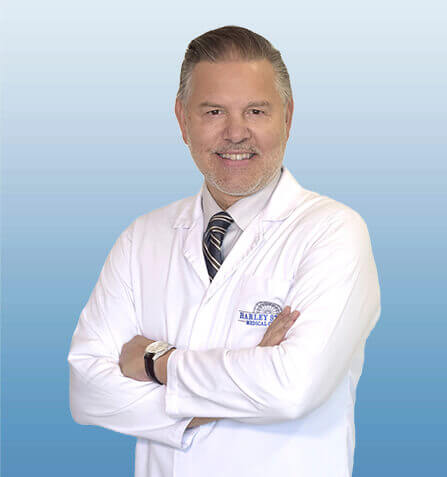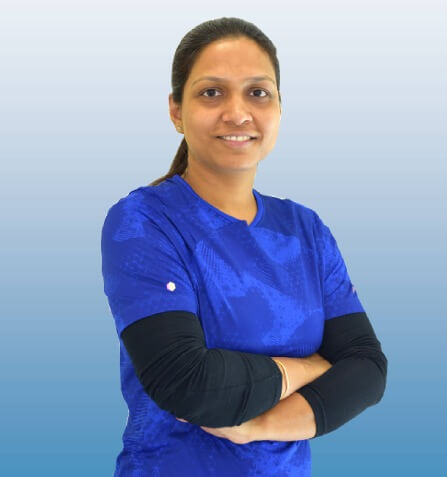NECK
NECK PAIN
The cervical spine comprises of the first 7 vertebrae. It supports the weight of the head and allows its smooth movement. Neck pain refers to pain or discomfort resulting from abnormalities or injuries to any of the structures in the neck including the muscles, ligaments, nerves, bones and vertebral joints. Neck pain is one of the most common health problems experienced by individuals, at some point of their lives.
Neck pain can either be a dull constant pain or a sudden sharp pain and is usually aggravated by movement. Apart from pain you may also experience muscle spasms, clumsy hand movements, gait and balance disturbances, numbness or tingling sensation, stiff neck, and swelling and tenderness over the affected region. Neck pain may also be associated with headache, dizziness, jaw pain, ringing sensation in the ears, and rarely bowel or bladder problems.
Neck pain may either be localized to the neck or may radiate to the shoulders, upper back, or arms. Cervical radiculopathy refers to the pain that originates in the neck and radiates to the arms.
CAUSES
Neck pain can result from muscle strain or sprain, trauma, poor posture and body mechanics, degenerative diseases, nerve compression, osteoarthritis of the cervical spine, infection of the cervical spine, and spinal tumors.
DIAGNOSIS
The diagnosis for neck pain is based on the medical history along with a physical examination and neurological examination. Your doctor will test your sensations, reflexes, and the strength of the muscles. Other imaging tests such as an X-ray or CT scan may also be may be used to confirm the diagnosis and detect any spinal fractures.
TREATMENT
In a majority of the cases, neck pain can be resolved without a surgery. Conservative treatments such as activity modifications, anti-inflammatory and pain medications, muscle relaxants, spinal injections, physical therapy, braces, and chiropractic care may help alleviate pain and associated symptoms. Your doctor may recommend combining two or more therapies to maximize the chances of a successful treatment outcome.
Surgery may be necessary for those who do not respond to conservative treatment or have cervical spine instability or neurologic dysfunction.
PREVENTION
You can prevent or improve your neck pain by following these simple steps:
- Perform relaxation exercises to reduce the undesirable stress on the neck muscles.
- Stretching exercises should be performed before and after exercise.
- Maintain a good posture.
- If you work at a computer adjust the monitor to your eye level. Stretch your neck frequently.
- If you use the telephone often, use a headset.
- Use a pillow that keeps your neck straight.
- Wear seat belts and use bike helmets to reduce injuries while driving or riding.
NECK STRAINS & SPRAINS
The cervical spine (neck) is the most flexible segment of the spine. It bears the weight of the head and allows significant amount of movement. The spinal muscles, tendons, and ligaments work together to maintain the stability of the spine. Neck strains and sprains are the most common causes of neck pain. A strain refers to the stretching or tear of a muscle or tendon (tissue that connects muscles to bone) while a sprain refers to the stretching or tear of a ligament (tissue that connect adjacent bones). Neck sprains and strains often result from excessive physical stress on the neck, such as heavy lifting or a fall.
Whiplash, also referred to as hyperextension and hyperflexion injury, is a common type of sprain injury of the neck. It is a soft tissue injury to the neck, usually caused by a sudden forceful jerk commonly occurring as a result of an automobile accident, sports injury or an accidental fall. Other causes of neck sprain and strain include poor posture, head injury, inadequate warm up before exercise, and sports-related injuries.
SYMPTOMS
Symptoms may arise abruptly or may develop after a few hours or even days after the initial injury and are usually aggravated by movement. Neck pain may be either a dull constant pain or a sudden sharp pain that may radiate to the shoulders, upper back, and arms. Apart from pain patients may also experience muscle spasms, stiff neck, and swelling and tenderness over the involved region. Neck pain may also be associated with headache, dizziness, jaw pain, ringing sensation in the ears, and rarely bowel or bladder problems.
DIAGNOSIS
An accurate diagnosis and an effective treatment plan are required for a successful outcome. Your doctor will arrive at a diagnosis and determine the cause of pain based on your medical history and the physical and neurological examination findings. Your doctor will also test your reflexes, muscle strength, and sensory perception. Diagnostic imaging tests such as X-rays and MRI scans may be required to confirm the diagnosis and to rule out a spinal fracture. Electromyography (EMG) may also be done to reveal any muscle dysfunction.
TREATMENT OPTIONS
Neck sprains and strains are commonly managed with non-surgical treatment without the need of a surgery. The non-surgical treatment options include activity modification, ice application, anti-inflammatory and pain medications, muscle relaxants, bracing, physical therapy, chiropractic, and acupuncture. To enhance the success of your treatment, your doctor may combine two or more treatment modalities.













